Garmin Forerunner 965 Vs Garmin Forerunner 955
The Forerunner 965 has an upgraded design and an AMOLED display, but the older 955 is cheaper and still a brilliant sports watch
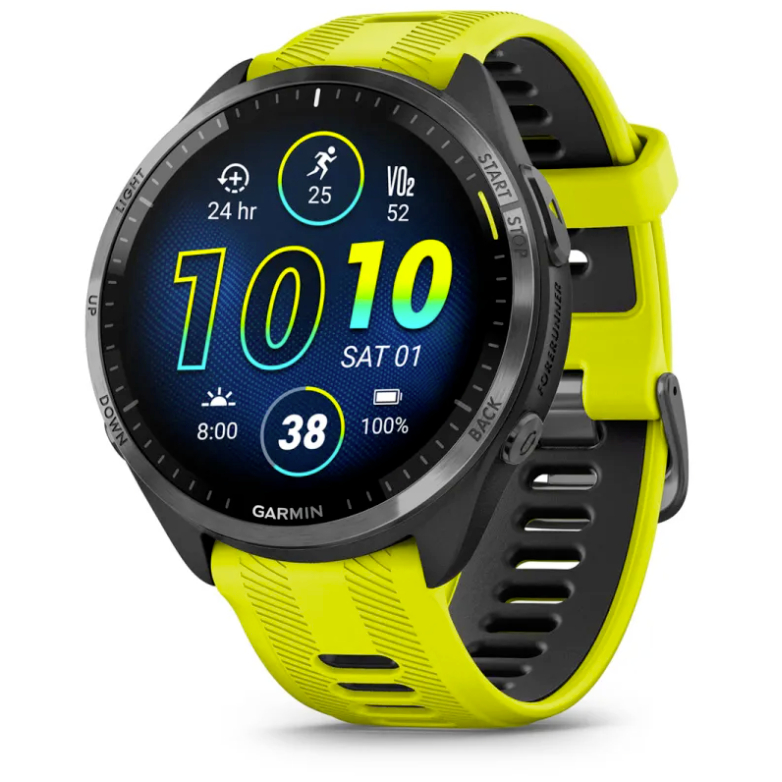
I consider the Garmin Forerunner 965 the best sports watch available, with all Garmin’s best features packed into an attractive, lightweight watch with a vibrant AMOLED screen. It doesn’t have the longest battery life, although its longevity is decent considering the screen
For
- AMOLED screen
- Better design than 955
- Accurate sports tracking
- Music and maps
Against
- Shorter battery life than 955
- More expensive than 955
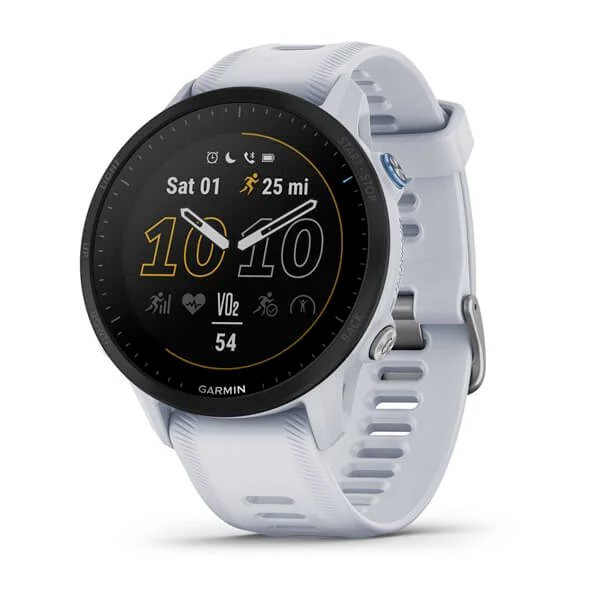
While it doesn’t have as elegant a design as the 965, or an AMOLED screen, the Garmin Forerunner 955 still makes a strong case for being the best-value sports watch. The sports tracking and training analysis is as good as on the 965 and the battery life is better; also, the 955 is cheaper on RRP and often available in sales.
For
- Great value for a top-end watch
- Longer battery life than 965
- Accurate sports tracking
- Music and maps
Against
- All-plastic design
- Screen is less bright
- Larger than 965 but smaller screen
The Garmin Forerunner 965 and Garmin Forerunner 955 are among the best sports watches available, offering top-tier tracking, training analysis and navigation features, as well as useful smarts like music storage. Choosing between them mainly comes down to aesthetics, since the Forerunner 965 has a smarter design and a bright AMOLED display. If you’re not fussed about the screen, or looks in general, then the Forerunner 955 offers better value, and lasts longer on a charge.
Garmin Forerunner 965 vs Garmin Forerunner 955: Price And Availability
Garmin launched the Forerunner 965 in March 2023 with a price of $599.99 in the US and £599.99 in the UK. The Forerunner 955 Solar costs $599.99/£549.99, while the standard version of the watch is $499.99/£479.99, though you can often find the older watch in sales for less.
How I Tested These Watches
I tested the Forerunner 955 Solar and Forerunner 965 for our full reviews, wearing each watch for several weeks to track my training, which usually includes 50-60 miles of running a week, plus yoga, strength sessions and some cycling. I’ve also tested older versions of the watch like the Forerunner 935 and 945, along with most of Garmin’s range.
- Read my Garmin Forerunner 965 review
- Read my Garmin Forerunner 955 review
Design
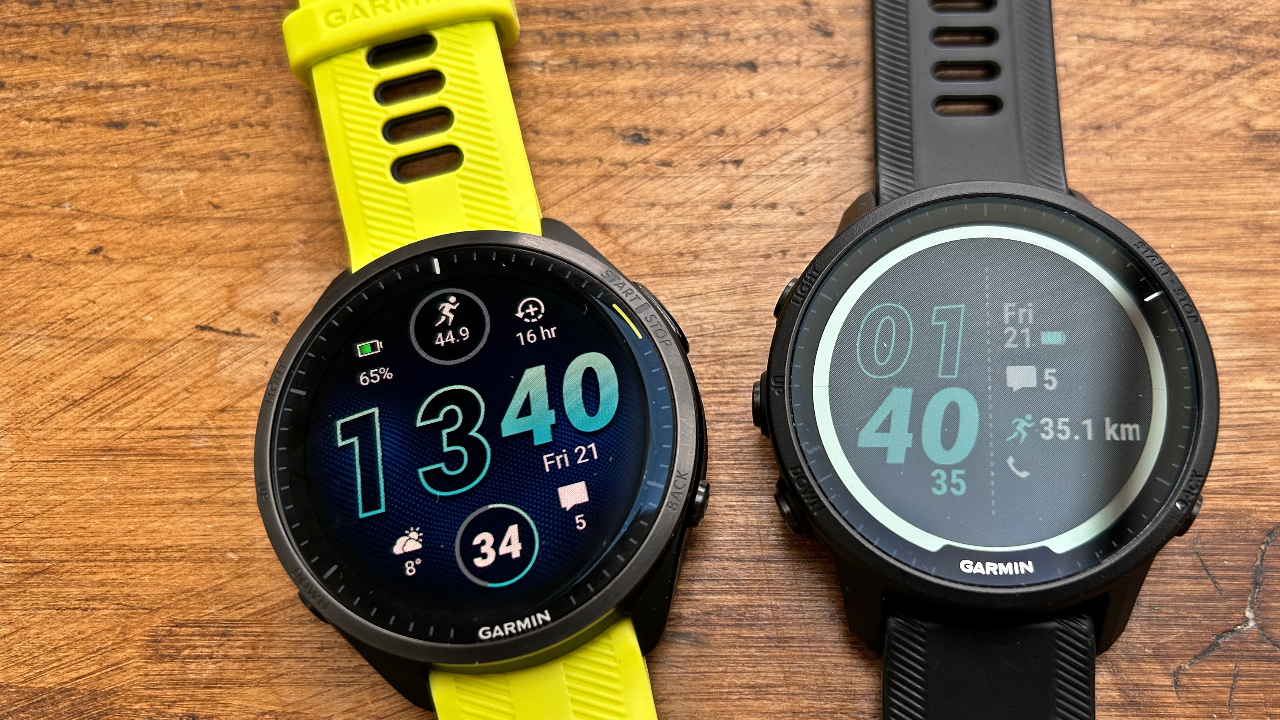
All the important differences between the Forerunner 965 and Forerunner 955 watches are found in their design. The Forerunner 955 sticks to the all-plastic build that was used for the 935 and 945 watches, with a memory-in-pixel touchscreen display and solar panels on the solar version of the watch.
The Forerunner 965 not only upgrades the screen to AMOLED, but also adds a thin titanium bezel to the watch to give it a more elegant look. The screen is also bigger, at 1.4in on the 965 vs 1.3in on the 955, with the case size staying at 47mm because the bezel is smaller on the 965. Both watches weigh 52g, though the Forerunner 965 is thinner at 13.2mm vs 14.3mm.
I found the AMOLED display a clear upgrade on the duller memory-in-pixel display of the 955. The resolution has increased from 260 x 260 pixels on the 955 to 454 x 454 pixels on the 965, and it’s easier to read the AMOLED screen in most conditions, especially when indoors, under cloud cover or in dappled light.
When running in bright sunlight wearing sunglasses the Forerunner 955’s screen is easier to see than the AMOLED screen, but it is still easy enough to see your stats on the Forerunner 965 in the sun. I prefer the new AMOLED display for general use with the Forerunner 965, and when running in the UK, usually under cloud cover or in a local forest, it’s a clearer screen to read on the run. It reduces battery life a little, though.
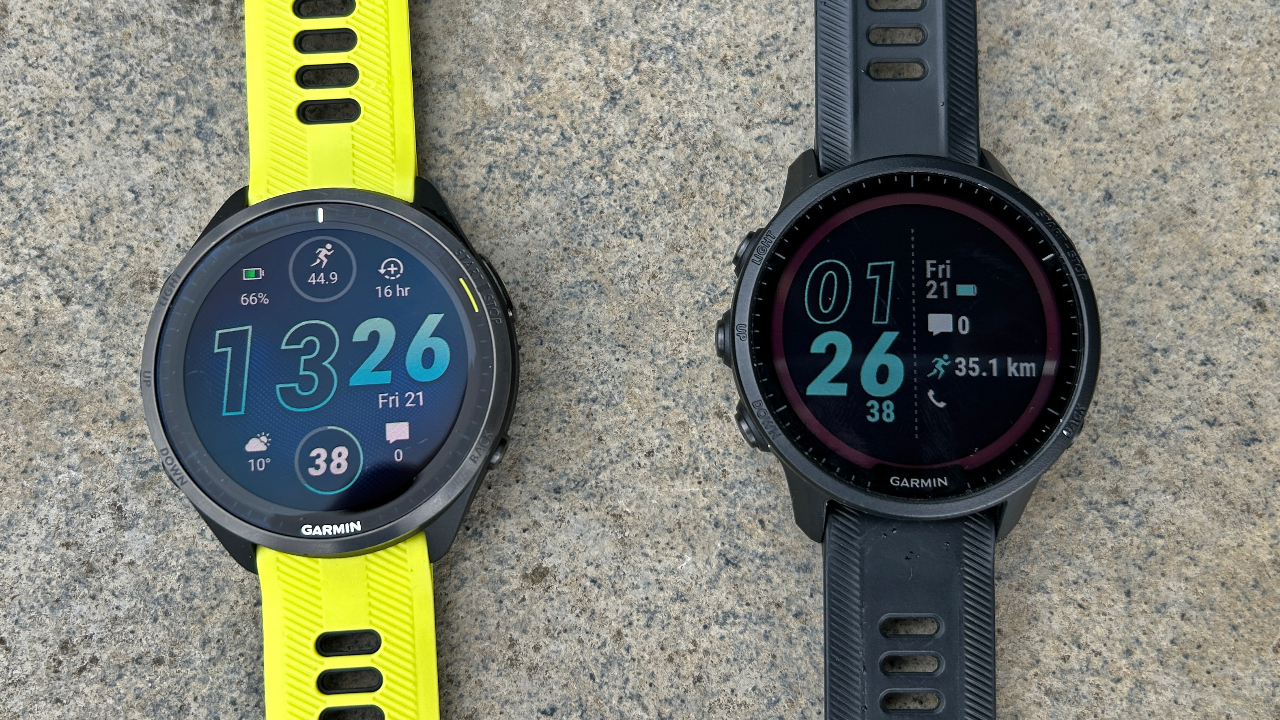
Another small change with the new watch is that it’s packaged with a charger that connects to a USB-C port, whereas the 955’s charger connects to a standard USB port. The charging port is the same on the watches themselves.
Both watches are packed with sensors to help you track your activity, including a barometric altimeter, compass and pulse oximeter. You can pair external sensors to the 955 and 965 via Bluetooth and ANT+, and they both have a 5ATM water resistance rating. Both watches also offer Garmin’s multi-band GPS tracking, which is more accurate than using GPS only, and they both have music storage as well as color maps.
Battery Life
The battery life of the Forerunner 965 takes a hit because of its AMOLED screen, although it’s not too big a hit. I found that the 965 lasted me six or seven days on a charge with the always-on screen enabled, notifications coming in and the multi-band GPS mode engaged for all runs.
Generally, I was running around 60 miles in that period, so triathletes also logging a lot of cycling may find it drains faster, but overall the battery life on the Forerunner 965 impressed me. It was only a couple of days less than I was getting from the Forerunner 955 Solar with the same use, with the older watch lasting me around eight days on average.
You will get more battery life from the Forerunner 955, especially if using the Solar version in sunny conditions, but the 955 is only likely to need charging a few days earlier, and if you change the screen from always-on to raise-to-wake it will last even longer.
- Is Garmin’s solar charging worth paying extra for?
| Row 0 - Cell 0 | Garmin Forerunner 965 | Garmin Forerunner 955 | Garmin Forerunner 955 Solar |
| Smartwatch mode | 23 days (7 days always-on) | 15 days | Up to 20 days |
| GPS-only | 31 hours | 42 hours | Up to 49 hours |
| GPS-only with music | 10.5 hours | 10.5 hours | 10.5 hours |
| Multi-band GPS | 19 hours | 20 hours | Up to 22 hours |
| Multi-band GPS with music | 8.5 hours | 8.5 hours | 8.5 hours |
Sports Tracking And Training Analysis
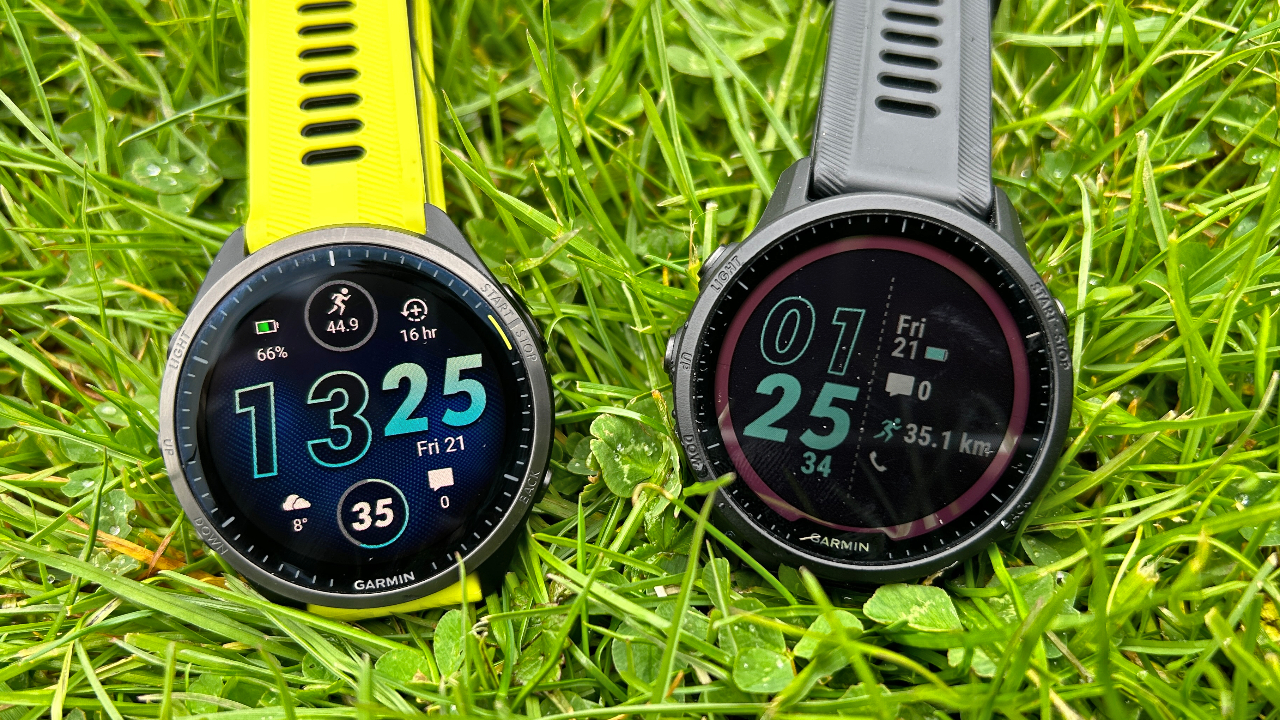
For the most part, the Garmin Forerunner 965 and Forerunner 955 offer the same sports tracking and training analysis, and are excellent on both fronts with detailed tracking and analysis, including Garmin’s useful training readiness feature.
One difference is that the Forerunner 965 can track running dynamics stats, such as ground contact time and vertical oscillation from the wrist, whereas the Forerunner 955 needs to be connected to a sensor like the Garmin HRM-Pro Plus chest strap or foot pod to get those stats.
Both offer a high level of GPS accuracy—they’re as good as anything on the market on this front—and the usual so-so optical heart rate tracking accuracy. Most of the time the heart rate tracking is OK, but there are still errors. I’d connect an external heart rate monitor to avoid incorrect readings that skew your training analysis.
Two new training analysis stats that were introduced on the Garmin Forerunner 965 are chronic training load and training load ratio. These stats are also going to be available on the Forerunner 955, with chronic training load tallying up your training load from the previous four weeks. This is then compared with your acute load—your training load in the last week—to give your training load ratio. You can use this stat to help make sure you don’t suddenly change the amount of training you’re doing.
Get the Coach Newsletter
Sign up for workout ideas, training advice, reviews of the latest gear and more.

Nick Harris-Fry is a journalist who has been covering health and fitness since 2015. Nick is an avid runner, covering 70-110km a week, which gives him ample opportunity to test a wide range of running shoes and running gear. He is also the chief tester for fitness trackers and running watches, treadmills and exercise bikes, and workout headphones.
Coros Vertix 2S Review: The Garmin Fenix Rival Gets Some Useful Upgrades
How To Pick The Best Garmin Watch For You
